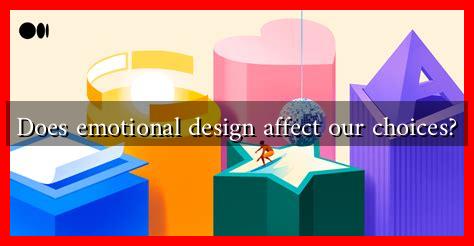-
Table of Contents
Does Emotional Design Affect Our Choices?
In an increasingly competitive marketplace, businesses are constantly seeking ways to influence consumer behavior. One of the most powerful tools at their disposal is emotional design. This concept revolves around creating products, services, and experiences that resonate emotionally with users, ultimately guiding their choices. But how exactly does emotional design affect our decisions? This article delves into the psychology behind emotional design, its impact on consumer behavior, and real-world examples that illustrate its effectiveness.
The Psychology of Emotional Design
Emotional design is rooted in the understanding that human decisions are not solely based on logic and rationality. Instead, emotions play a significant role in shaping our preferences and choices. According to a study published in the journal *Emotion*, emotional responses can influence decision-making processes, often leading to choices that may not align with rational thought.
Key psychological principles that underpin emotional design include:
- Emotional Resonance: Products that evoke positive emotions can create a sense of connection and loyalty among consumers.
- Memory and Recall: Emotional experiences are more likely to be remembered, making it easier for consumers to recall a brand or product when making a choice.
- Social Influence: Emotions can drive social behaviors, leading individuals to make choices based on what they perceive as socially acceptable or desirable.
How Emotional Design Influences Consumer Choices
Emotional design can significantly impact consumer choices in various ways:
- Brand Loyalty: Brands that successfully evoke emotions can foster loyalty. For instance, Apple has built a strong emotional connection with its customers through its innovative design and marketing strategies.
- Purchase Decisions: Emotional triggers can lead to impulse purchases. A study by the *Journal of Consumer Research* found that consumers are more likely to buy products that elicit positive emotions, even if they do not need them.
- Perceived Value: Products designed with emotional appeal can command higher prices. Luxury brands often leverage emotional design to create a sense of exclusivity and desirability.
Case Studies: Emotional Design in Action
Several companies have successfully harnessed the power of emotional design to influence consumer choices:
- Coca-Cola: The brand’s “Share a Coke” campaign personalized bottles with popular names, creating an emotional connection with consumers. This strategy led to a significant increase in sales, demonstrating how emotional design can drive purchasing behavior.
- Airbnb: By focusing on the emotional aspects of travel, Airbnb’s marketing emphasizes belonging and community. Their campaigns often feature real stories from hosts and guests, fostering a sense of connection that encourages users to choose their platform over traditional hotels.
- Nike: Nike’s “Just Do It” campaign taps into the emotions of determination and empowerment. By associating their products with inspiring stories, Nike has cultivated a loyal customer base that resonates with their brand values.
Statistics Supporting Emotional Design
Research supports the notion that emotional design significantly impacts consumer behavior:
- A study by *Harvard Business Review* found that emotionally connected customers are more than twice as valuable as highly satisfied customers.
- According to a report by *McKinsey*, brands that excel in emotional engagement outperform their competitors by 85% in sales growth.
- Research from *Nielsen* indicates that ads with emotional appeal perform twice as well as those that are purely rational.
Conclusion: The Power of Emotional Design
Emotional design is a potent force that shapes consumer choices in profound ways. By understanding the psychological principles behind emotional responses, businesses can create products and experiences that resonate with their audience. The case studies and statistics presented illustrate that emotional design is not just a marketing trend; it is a fundamental aspect of consumer behavior that can lead to increased loyalty, higher sales, and a stronger brand presence.
As we move forward in an era where consumer choices are influenced by more than just price and functionality, businesses must prioritize emotional design to connect with their customers on a deeper level. For further reading on the impact of emotional design, you can explore resources from the Nielsen and Harvard Business Review.

